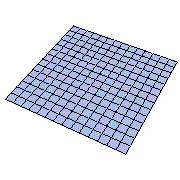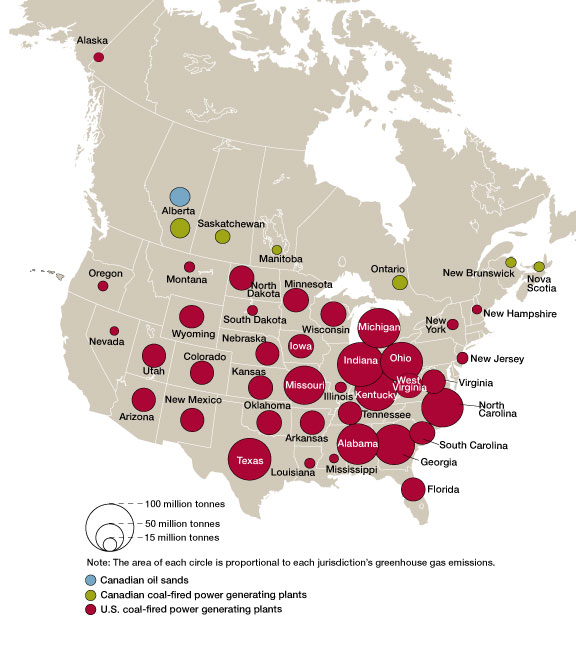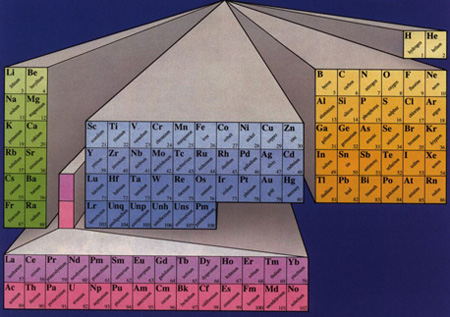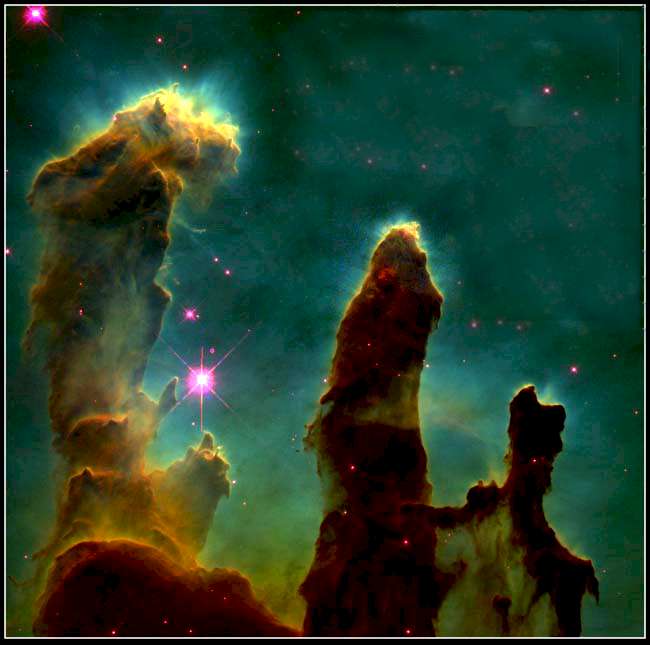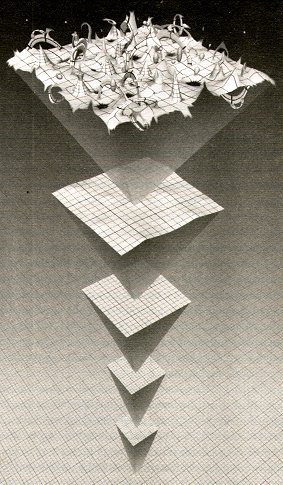Quantum
Be aware that this world that gives us life and that we apprehend is but a slack estimate of the material universe's actual self-sustaining capacities to maintain us and all that we can see and measure.
"In Quantum Field Theory nature has been reduced to energetic fields made out of dimensionless particles that ceaselessly and randomly come into and out of existence . . . . describe how the world really is."
Potter, p. 137.
"Quantum reality is not about being in two or more places at once, it is about not being anywhere that we call place. . . . it is an extension of what we mean by existence."
p. 144.
 Christopher Potter. You Are Here: A Portable History of the Universe. New York: Harper Collins, 2009.
Christopher Potter. You Are Here: A Portable History of the Universe. New York: Harper Collins, 2009.
nature | dispute | evidence | understanding | entanglement | elements | space
"The universe is something that comes from nothing."
"We know that mass is the stuff that distorts space-time, and it may also be what is conferred on energy by the Higgs field. We are less clear what energy is. We know it comes in many forms and we know how these forms change one into another, but ultimately we don't know what energy is. Sunlight, for example, is turned by the process of photosynthesis into plant matter, some of which is, over vast periods of time, has been turned into coal."
p. 151.
Nature
![]() "Nature encourages us to believe in our ad hoc phenomena.1 Just as we see apples fall and so we believe in Newton's gravity, even though we didn't know what it was until Einstein turned it into the geometry of space-time, so we see iron filings
"Nature encourages us to believe in our ad hoc phenomena.1 Just as we see apples fall and so we believe in Newton's gravity, even though we didn't know what it was until Einstein turned it into the geometry of space-time, so we see iron filings 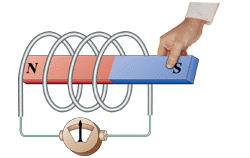 align themselves along a magnetic field and begin to believe that a magnetic field must exist. The field is our explanation of how a force can jump across space, as gravity does across a gravitational field in Newton's description. The field effectively is the force."
align themselves along a magnetic field and begin to believe that a magnetic field must exist. The field is our explanation of how a force can jump across space, as gravity does across a gravitational field in Newton's description. The field effectively is the force."
p. 119.
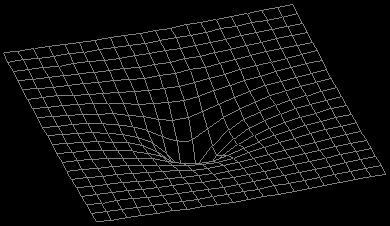
The fact that space as we perceive it is actually a spacetime curvature is among the hardest fundamentals to grasp.
"It happens in quantum physics. Heisenberg tells us that even single atoms are unpredictable."
Potter, p. 147.
"Einstein was wrong, and the world really does exist imprecisely."
p. 149.
". . . the validation is in the mathematics."
Potter, p. 157.
nature | dispute | evidence | understanding | entanglement | elements | space
Two roads diverge
"There are those who feel that the Standard Model is so out of control 2 that surprising and uncredited physical evidence would be more useful at this point, evidence that might point towards some new way of describing reality."
p. 152
"Seen from the perspective of strings, the particles of the particle zoo (Standard Model) look like points because we are seeing them from a distance. Closer to and at higher energies, what we had taken to be fields and particles reveal themselves to be made out of vibrating lengths of pure energy. String theory attempts to smooth out the violent nature of the quantum world in order to find some deeper symmetry hidden behind the apparent randomness."p. 153.
"String theory is not the only game in town, and some physicists think that it has been a disaster for science,. . . . The theory of loop quantum gravity is another attempt at a quantum theory of gravity. In string theory the fabric of reality is woven out of strings of energy, In loop quantum gravity the material is woven from quanta of space and time; a way of knitting the space-time of relativity theories. . . . . In loop quantum gravity the particles of the particle zoo are shapes braided together out of Planck lengths of space."pp. 157-158.
nature | dispute | evidence | understanding | entanglement | elements | space
Verification Method
Higgs boson
"The Higgs boson, and the field it generates, is what changes what would otherwise be a world made entirely out of radiation into a world of things that have mass."
"Finally we are getting close to understanding how light can become stuff."
Potter, p. 141.
"Since the 1970s the descriptions of the weak nuclear force and the electromagnetic force have been combined into a single description called the electroweak force. It requires a symmetry conferred by a particle named the Higgs boson."
p 140.
"The Higgs boson was posited in order to come up with a mathematical description to explain the suspected deeper symmetry that connects W, Z and photon particles."
pp. 140-141.
bosons are particles that carry force fields
"boson is the collective name for for all force-carrying particles."
p. 140.
For more on the Higgs boson see CERN: higgs-boson.
nature | dispute | evidence | understanding | entanglement | elements | space
"What quantum physics actually means remains a vexed question."
Potter, p. 141.
"The central question are where (at what sizes) and how does the quantum world become the classical world?"
p. 142.
"At quantum sizes, Heisenberg tells us, even single particles are unpredictable."
p. 142.
"Quantum physics appears to marry the observer to the observed."
p. 143.
"There is a deeper understanding of existence, and that is existence in a quantum world,which we can only measure statistically and partially in the observed world."
p. 144.
". . . understanding that it is Nature that does the  observing, not humans. The wind and sunlight measure the tree, and convince us the tree exists even when we are not there to observe it. It is the interaction of quantum objects with the environment that produces what we understand as classical objects, such as cats and tables (trees, rivers). We have found out ways of preventing quantum objects from decohering, but it is a very hard thing to do."
observing, not humans. The wind and sunlight measure the tree, and convince us the tree exists even when we are not there to observe it. It is the interaction of quantum objects with the environment that produces what we understand as classical objects, such as cats and tables (trees, rivers). We have found out ways of preventing quantum objects from decohering, but it is a very hard thing to do."
p.144.
"Quantum physics has brought us . . . to understand . . . how a world appears to be made of separate things arises out of a world of inseparability (of no thongs)."p.145.
nature | dispute | evidence | understanding | entanglement | elements | space
Entanglement
"Quantum physics tells us that it is more useful to talk of the energy of an elementary particle rather than its size. . . .but now we also know where size itself disappears altogether from the world."
Potter, p. 157.
"Quantum entanglement is thought to be one of the trickiest concepts in science, but the core issues are simple. And once understood, entanglement opens up a richer understanding of concepts . . . "
Albert Einstein, Boris Podolsky and Nathan Rosen (EPR) described a startling effect that can arise when two quantum systems are entangled. The EPR effect marries a specific, experimentally realizable form of quantum entanglement with complementarity.
Frank Wilczek, "Entanglement Made Simple" Quanta Magazine, 28 April 2016.
"The paradox [EPR] arises out of the fact that when we measure the spin of the one particle we are guaranteed from the way the system was set up to know what the spin of the other particle is, and this would be true even if the particles are millions of miles apart when we make the measurement."
" . . . its primary purpose is to highlight some sort of irreconcilable discontinuity between the macroscopic world and the microscopic world as described in quantum physics."
Potter, p. 148.
Two experiments "also showed that instantaneous communicationis possible among quantum objects."Potter, p. 149.
"We've puzzled over the nature of entanglement for almost a century. Now physicists have devised a way for us to “see” it for the first time."
"We still do not know how to describe these microscopic geometries, but the entanglement of these structures might somehow give rise to spacetime itself."
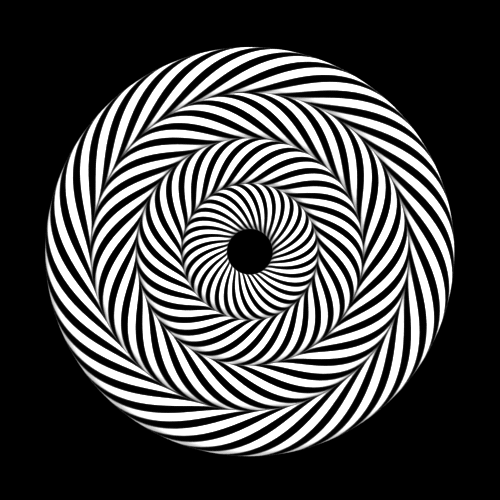
"When the amount of entanglement becomes larger (than subatomic particles), we have lots of threads, and these threads could weave together to form the fabric of spacetime. In this picture, Einstein's relativity equations are governing the connections and reconnections of these threads; quantum mechanics is not just an add-on to gravity–it is the essence of the construction of spacetime."
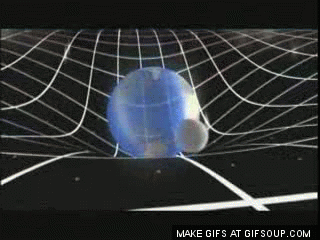 Einstein's spacetime
Einstein's spacetime
"For now this picture is wild speculation, but several clues point to it, . . . ."
Juan Maldacena, "Black holes, Wormholes and the Secrets of Spacetime." Scientific American, November, 2016; p. 31.
nature | dispute | evidence | understanding | entanglement | elements | space
Periodic Table of elements
Chemical regularity was initially discovered, ordered, and unified by Dmitri Mendeleev in the 1869.
Periodic Table of the 119 chemical elements.
The Horse head Nebula where stars emerge from dust.
"Our existence in this place, this microscopic corner of the cosmos, is fleeting. With utter disregard for our wants and needs, nature plays out its grand acts on scales of space and time that are truly hard to grasp. Perhaps all that we can look to for real solace is our endless capacity to ask questions and seek answers about the place we find ourselves in. One of the questions we are now asking is how deeply our specific circumstances are connected to this majestic universal scheme of stars, galaxies and black holes.
Caleb Scharf,
Scientific American, August, 2012; p. 34.
". . . spacetime itself could emerge from the entanglement of more fundamental microscopic constituents of the universe." ". . . . The relation between entanglement and wormholes may help in developing a unified theory of quantum mechanics and spacetime –what physicists call a theory of quantum gravity – that derives the physics of the macroscopic cosmos fro the laws that govern the interactions of the atomic and subatomic realms." 3.
Juan Maldacena
Scientific American, November, 2016; p 28.
nature | dispute | evidence | understanding | entanglement | elements | space
Related pages:
 The book:
The book:
Christopher Potter. You Are Here: A Portable History of the Universe. New York: Harper Collins, 2009.
“You Are Here is not just physics for poets, but as close to poetry or music as science is ever likely to get. Christopher Potter’s narrative is as imaginative, ingenious, and elegantly concise as it is user-friendly.”
— Sylvia Nasar, author of A Beautiful Mind
 Notes
Notes
1. By ad hoc phenomena Potter means concepts or ideas based on situations or occurrences formed for those particular or limited reasons. Those mental formulations of the moment based on specific incidents that are generalized to a wider set of circumstances.
2. "...it is not time for physicists to call it a day just yet. Even though the Standard Model is currently the best description there is of the subatomic world, it does not explain the complete picture." CERN "The Standard Model," 2016.
"On 4 July 2012, the ATLAS and CMS experiments at CERN's Large Hadron Collider announced they had each observed a new particle in the mass region around 126 GeV. This particle is consistent with the Higgs boson predicted by the Standard Model."
CERN: "The Higgs-boson," 2016
3. Juan Maldacena, "Black holes, Wormholes and the Secrets of Spacetime." Scientific American, November 2016, pp. 28-31.
This page was created for better learning by J. V. Siry. Thursday, November 3, 2016 12:53 PM, PDT.

